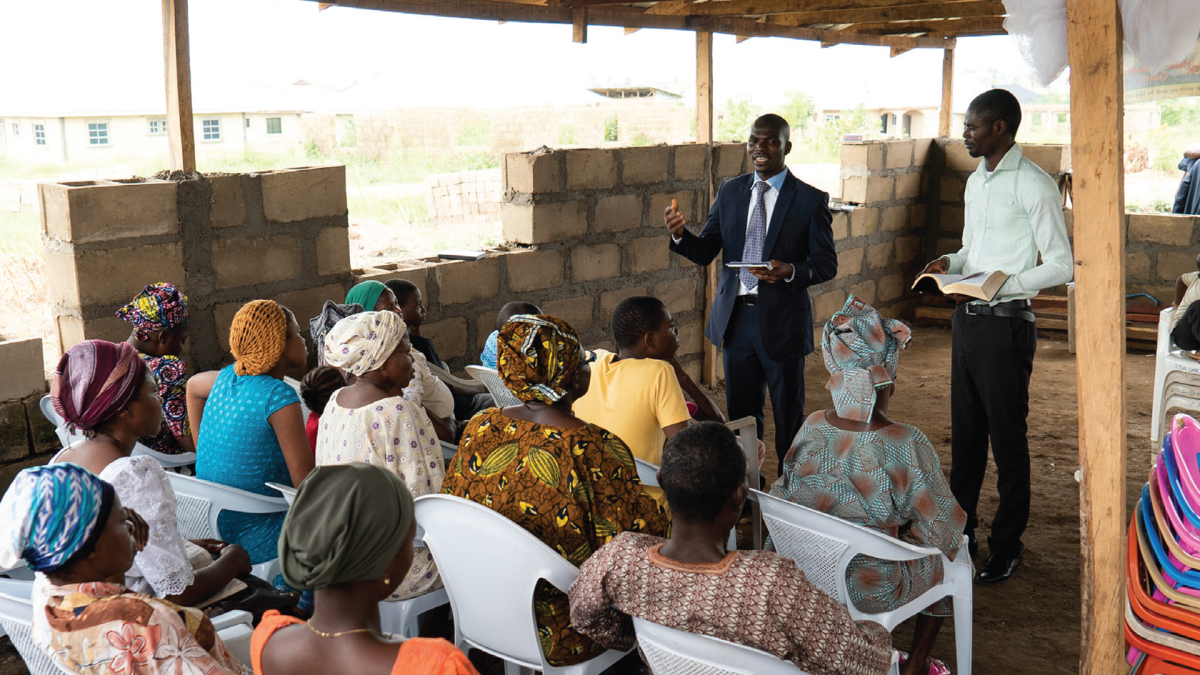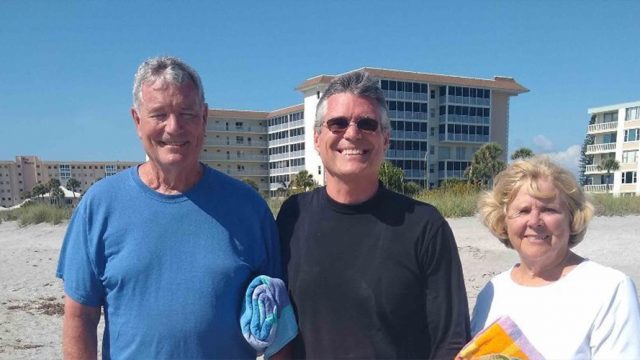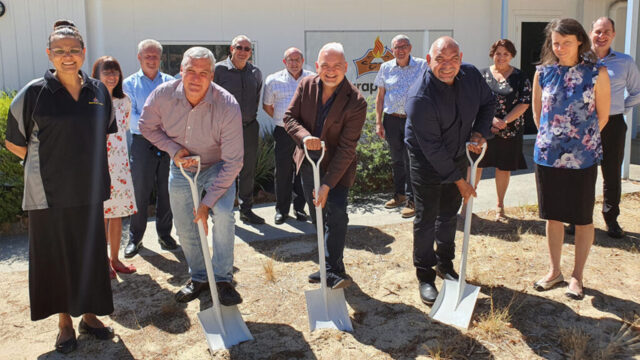Reaching all requires all of us.

Thinking about mission in our local communities and, at the same time, catching a vision for a global church can be a great challenge. But when we realize that our call is to be “glocal,” involving not only local responsibility but also global needs, it can appear to be impossible. Our mission is to act locally and support globally, because, as noted by Ellen White, “the world is our field of missionary toil.”1 Every nation, tribe, and language group needs salvation, so we are called to preach the gospel of the kingdom to all the world (Matt. 24:14).
BIG CHALLENGES
Global mission is huge. This is easily understood when we compare the world population with current Seventh-day Adventist membership. Planet Earth reached 8 billion people in November 2022, and our denomination reached 22 million members in 2022. We can celebrate our great family, but it’s almost insignificant when compared to the size of the global population. How will 22 million Adventists reach 8 billion people? Every year the world’s population grows by about 72 million people, but we average only 1 million accessions.
When we look at world languages, the challenge gets even bigger. Scholars estimate the existence of around 7,100 languages in the world, but the Adventist Church works in only 496. Of course, these 496 languages include the main language groups of the world, but have you ever thought about the 6,600 languages in which we are not able to communicate the biblical message of hope?
Our number-one missiological challenge is the 10/40 window. It represents an imaginary rectangle stretching between 10 and 40 degrees north latitude on the world map, where most of the world’s population is concentrated. But now missiologists are expanding the number of challenging “windows,” including the 10/40 window, a post-Christian window, and an urban window.
The 10/40 window, an area including almost 60 percent of the world population, boasts approximately 5.2 billion people—out of a total of 8 billion! This area is the birthplace of three great world religions: Islam, Hinduism, and Buddhism. The 10 most dangerous countries for Christians and a great number of countries where religion and state are the same lie inside this missiological window. Eight out of 10 people in the 10/40 window live in extreme poverty. The reality of the Adventist Church in this region is complex. Our membership stands around 3 million, with the remaining 19 million Adventists living outside the 10/40 window.
The post-Christian window doesn’t fit in a rectangle on a map as the 10/40 window, but it can be geographically delimited. This window includes Europe, the United States, Canada, Australia, New Zealand, and many other countries of the world that are rapidly moving away from a Christian worldview. The contrast between Christianity and post-Christianity is very clear: Christianity believes that the best is in the life to come, while post-Christian or secular philosophy defends that the best is in the present life. Christianity teaches that believing in the supernatural demonstrates faith, while a post-Christian culture thinks that belief in the supernatural demonstrates cultural limitations and intellectual backwardness. Secularism strongly impacts the growth of the church.
The urban window also challenges our mission. This window reaches every continent and is growing rapidly. The list of the top-10 large urban areas in the world includes such cities as Tokyo, Delhi, Shanghai, Dhaka, Cairo, Beijing, Mumbai, and Osaka. In this list only São Paulo and Mexico City have a significant Adventist presence. More than 500 cities of the world have 1 million inhabitants or more, with an average of one Adventist for every 89,000 inhabitants, while the global average is 1 Adventist for every 358 inhabitants. Among these cities, there are 49 cities with fewer than 10 Adventists, and 43 with no Adventist presence whatsoever. How can we reach these overwhelming numbers of people?
GOD NEEDS ALL OF US
To face this huge missiological challenge and reach everyone, we need everybody. Our major investment in mission projects should move from areas of the world with more missional capacity to regions with less capacity. Some regions need to be helpers, while others need to be helped. This is the beauty of a world church with a global structure and unity.
Gorden Doss, professor emeritus in the mission department of the Seventh-day Adventist Theological Seminary at Andrews University, suggests that the producers of mission resources can help the consumers of mission resources. He organized all divisions and unions attached to the General Conference in two groups: the “Big 6” (including the North American Division, Inter-American Division, South American Division, East-Central Africa Division, Southern Africa-Indian Ocean Division, and South Pacific Division) and the “Diverse 8+” (including the Euro-Asia Division, Inter-European Division, Trans-European Division, Northern Asia-Pacific Division, Southern Asia Division, Southern Asia-Pacific Division, West-Central Africa Division, Ukrainian Union Conference, Chinese Union Mission, Middle East and North Africa Union Mission, and Israel Field).
The “Big 6” divisions have 77.4 percent of all Seventh-day Adventist membership and just 21.1 percent of the global population. They can be considered areas of low strategic need. Despite many challenges, they have the needed tools to fulfill the mission in their areas. The “Diverse 8+” have 78.9 percent of all the global population, but only 22.6 percent of our membership. They really represent a high strategic need.2
Only a reorganization of our mission resources, strategies, and missionary sending will help us to be more efficient to face the immense challenge of our global mission. We are calling this initiative Mission Refocus. It’s an appeal for some regions that in the past received foreign missionaries to start the work, and today are vibrant and strong, to start to do the same for other challenging areas of the world. “Think of our missions in foreign countries. Some of them are struggling to gain even a foothold; they are destitute of even the most meager facilities. Instead of adding to facilities already abundant, build up the work in these destitute fields,” wrote Ellen White years ago.3
Jesus will return not only to the territory of the “Big 6,” but also to the territory of the “Diverse 8+.” That means that the entire Adventist family, together, needs to take the responsibility to bring “salvation to the ends of the earth” (Acts 13:47). Ellen White is clear when she states that “His kingdom will not come until the good tidings of His grace have been carried to all the earth.”4
The global mission before us is humanly impossible. But it’s not ours. We are just instruments for a mission that belongs to God. All our projects, strategies, and mission offerings are important, but only His miracles will make it possible to reach every corner of this globe. Mission is not a human process; mission is a miracle. Only through the power of the Holy Spirit and the latter rain will doors be opened, will miracles happen, and will we together be able to fulfill the mission “unto the uttermost part of the earth” (Acts 1:8, KJV).
1 Ellen G. White, Testimonies for the Church (Mountain View, Calif.: Pacific Press Pub. Assn., 1948), vol. 7, p. 12.
2 Gorden Doss, Introduction to Adventist Mission (Silver Spring, Md.: Institute of World Mission, 2018), pp. 279-283.
3 E. G. White, Testimonies, vol. 6, p. 450.
4 Ellen G. White, Thoughts From the Mount of Blessing (Mountain View, Calif.: Pacific Press Pub. Assn., 1956), pp. 108, 109.








